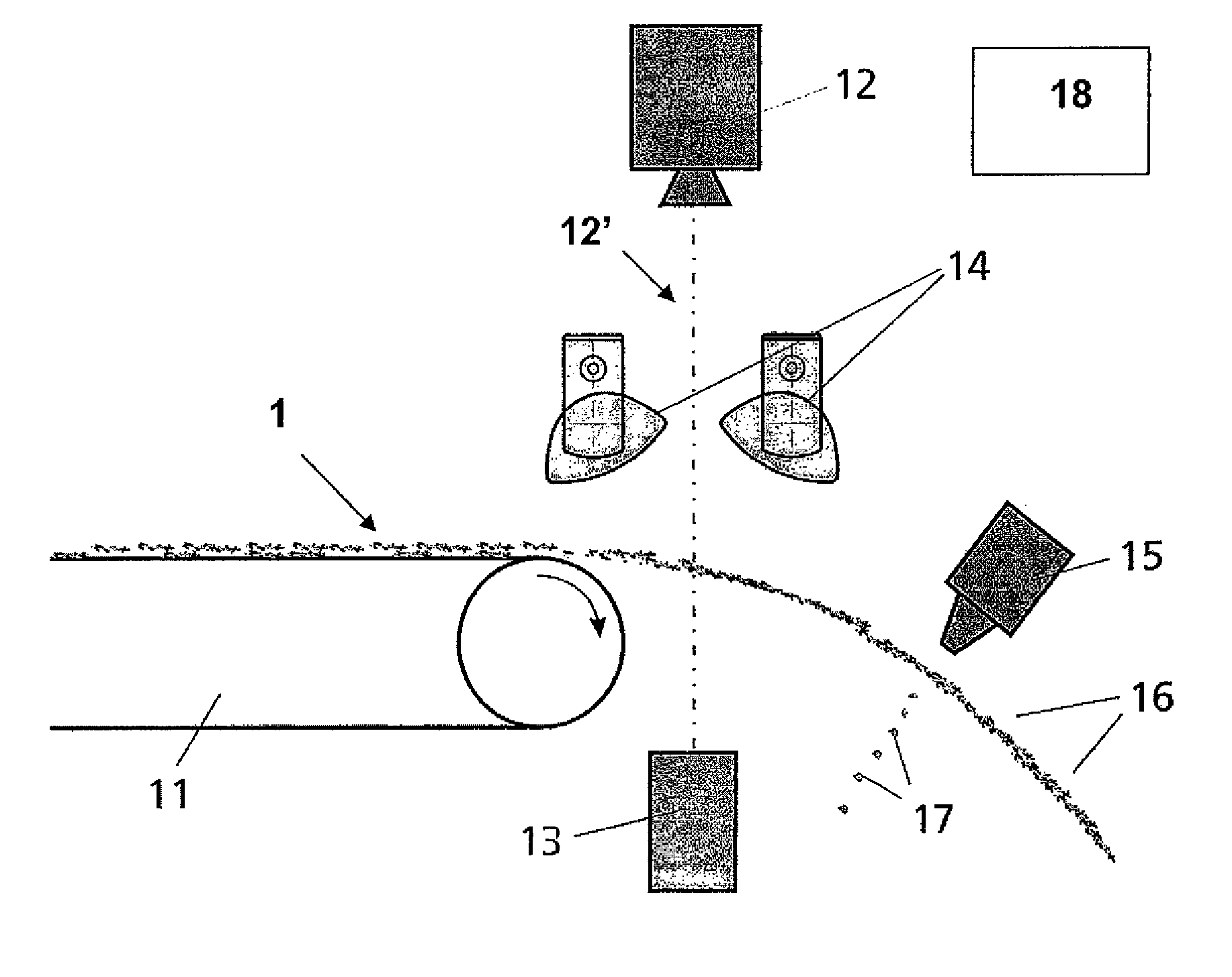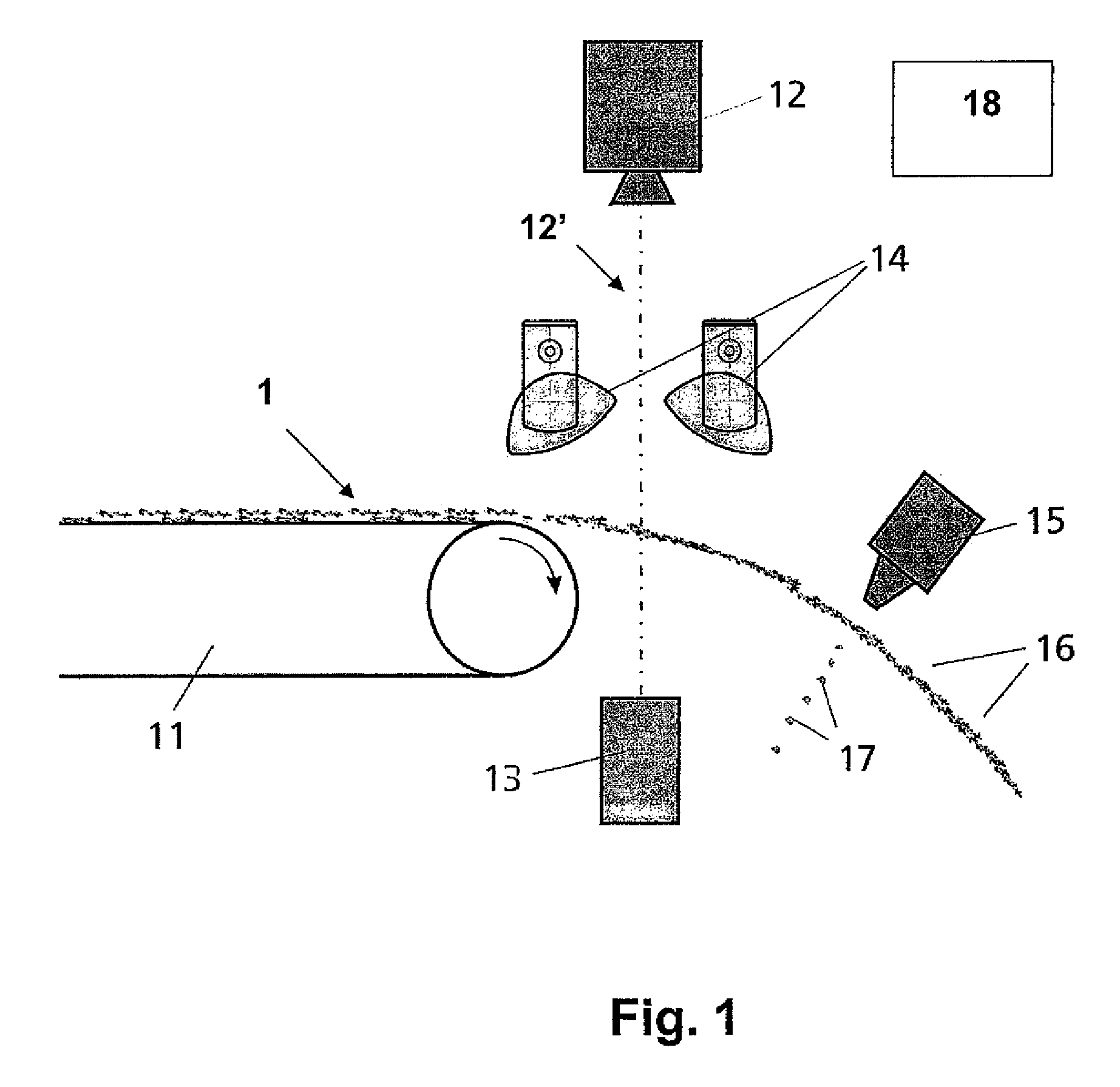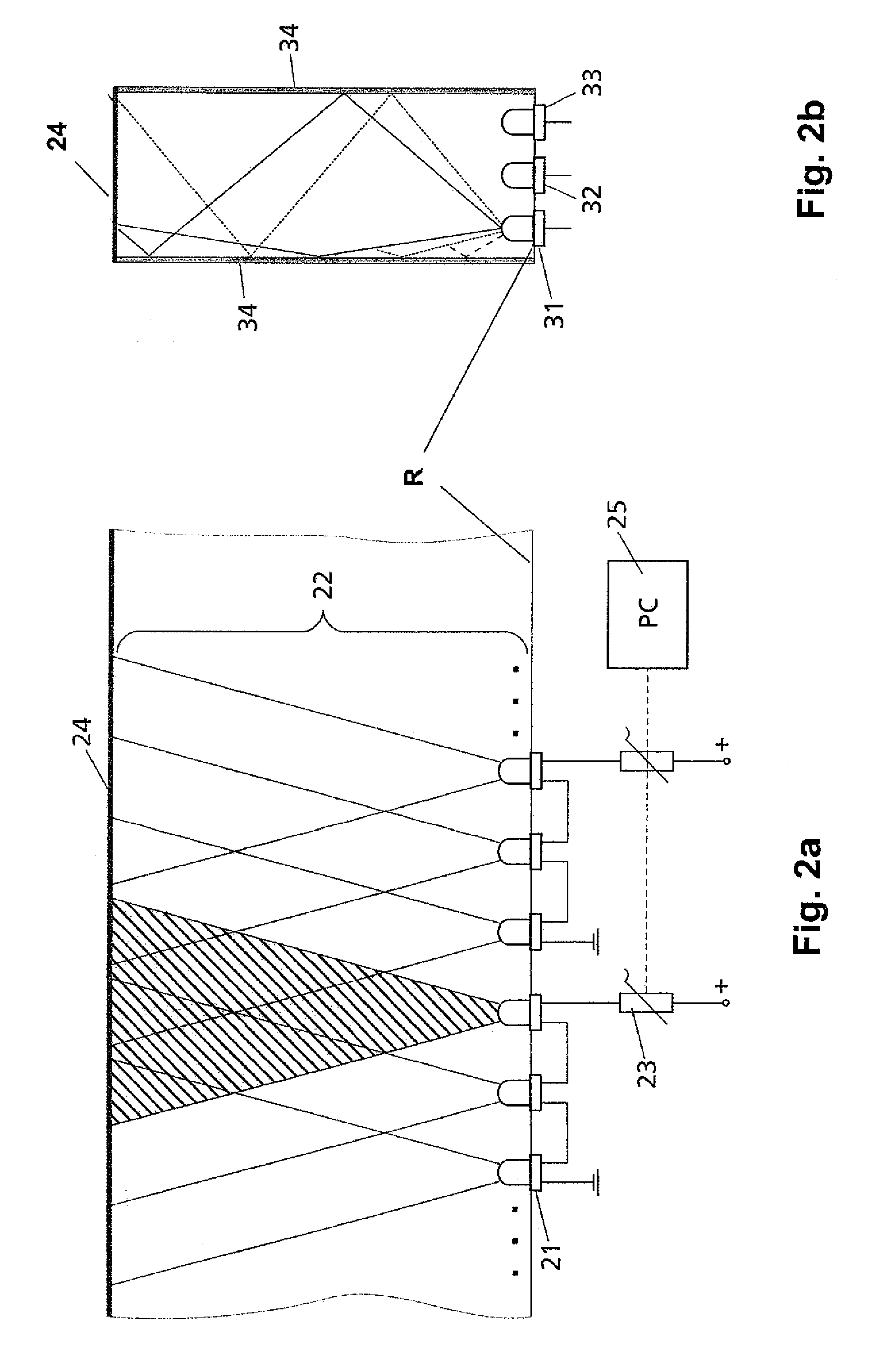Device and method for optically sorting bulk material
a technology of optical sorting and bulk materials, applied in the direction of measurement devices, material analysis by optical means, instruments, etc., can solve the problems of reducing material throughput and thus economic utility at a given system performance, implementing a homogeneous background, and unable to reliably recognize color, etc., to achieve the highest selection quality and increase performance
- Summary
- Abstract
- Description
- Claims
- Application Information
AI Technical Summary
Benefits of technology
Problems solved by technology
Method used
Image
Examples
Embodiment Construction
[0032]FIG. 1 shows the schematic construction of a device for the optical selection of components of at least one fraction, which is preferably distinguished by the color, from a bulk material stream 1 conveyed along a conveyance direction 11, which, after leaving the conveyance direction 11 along a free trajectory, is captured in a collection container (not shown in greater detail). A color-capable camera unit 12, whose viewing direction 12′ registers the bulk material stream 1 in front of a background 13, whose color is adaptively adaptable, is located largely perpendicular to the free flight direction of the bulk material stream 1. Lamps 14, which illuminate the bulk material stream 1 using white light, are provided symmetrically to the viewing direction 12′ of the camera unit 12 to illuminate the bulk material stream 1. The special feature of the device is that the background 13 is adapted in regard to color and brightness to those components within the bulk material stream 1 wh...
PUM
 Login to View More
Login to View More Abstract
Description
Claims
Application Information
 Login to View More
Login to View More - R&D
- Intellectual Property
- Life Sciences
- Materials
- Tech Scout
- Unparalleled Data Quality
- Higher Quality Content
- 60% Fewer Hallucinations
Browse by: Latest US Patents, China's latest patents, Technical Efficacy Thesaurus, Application Domain, Technology Topic, Popular Technical Reports.
© 2025 PatSnap. All rights reserved.Legal|Privacy policy|Modern Slavery Act Transparency Statement|Sitemap|About US| Contact US: help@patsnap.com



